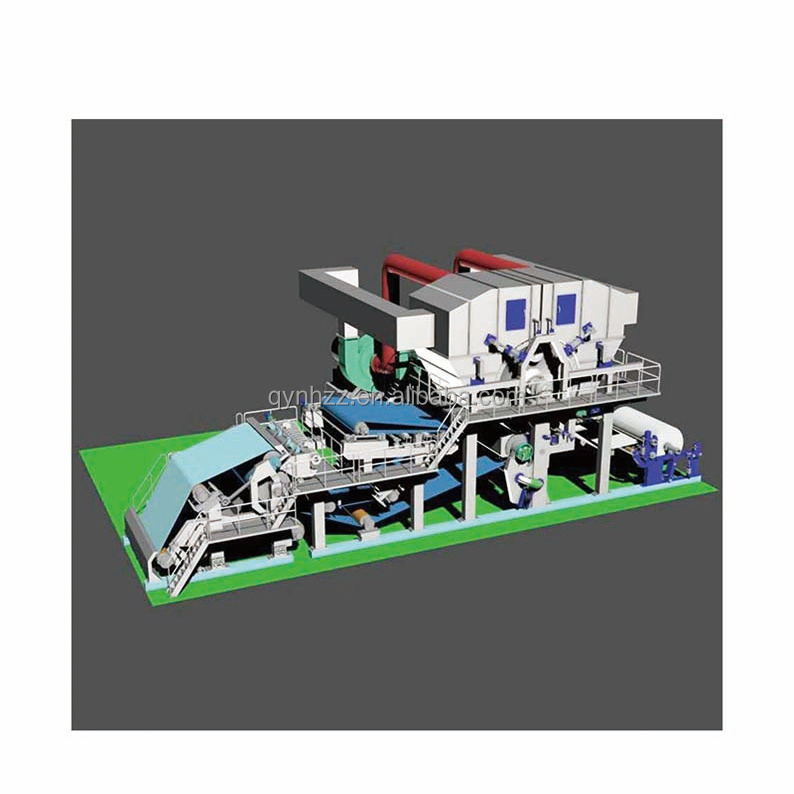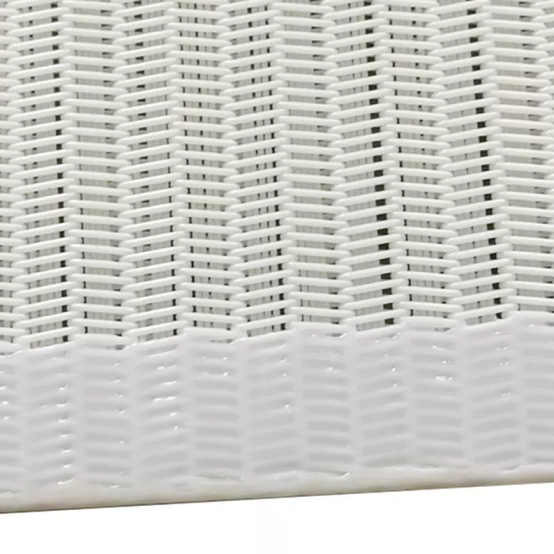Understanding the Environmental Impact of Tissue Paper Process Equipment: A Comprehensive Analysis
Release time:
2025-03-28
Understanding the Environmental Impact of Tissue Paper Process Equipment Table of Contents Introduction to Tissue Paper Process Equipment Environmental Impact of Tissue Paper Manufacturing Resource Consumption in the Tissue Paper Industry Waste Management Strategies Sustainable Practices in Tissue Paper Processing Technological Advancements in Eco-Friendly Equipment Ca
Understanding the Environmental Impact of Tissue Paper Process Equipment
Table of Contents
- Introduction to Tissue Paper Process Equipment
- Environmental Impact of Tissue Paper Manufacturing
- Resource Consumption in the Tissue Paper Industry
- Waste Management Strategies
- Sustainable Practices in Tissue Paper Processing
- Technological Advancements in Eco-Friendly Equipment
- Case Studies: Successful Implementation of Sustainable Practices
- Future Trends in Tissue Paper Manufacturing
- FAQs on Tissue Paper Process Equipment and Environmental Impact
- Conclusion
Introduction to Tissue Paper Process Equipment
Tissue paper production is a significant sector in the global paper industry, with a wide range of applications including hygiene products, household items, and industrial uses. The manufacturing process involves several stages, each utilizing specific equipment that influences the overall environmental footprint. Understanding the environmental impact of tissue paper process equipment is crucial for promoting sustainable practices and technologies.
Environmental Impact of Tissue Paper Manufacturing
The environmental impact of tissue paper manufacturing is multifaceted. It encompasses resource extraction, energy consumption, water usage, and waste generation. This section will explore the critical areas where tissue paper processing equipment affects the environment.
Resource Extraction and Deforestation
The primary raw material for tissue paper is wood pulp, sourced from trees. The demand for pulp leads to deforestation, which disrupts ecosystems and biodiversity. It's essential to consider sustainable sourcing practices, such as utilizing recycled fibers and certified wood sources, to mitigate these impacts.
Energy Consumption and Carbon Footprint
Tissue paper manufacturing is energy-intensive. The equipment used in the production process, such as pulpers, dryers, and press machines, consumes large amounts of electricity and fossil fuels. This reliance on non-renewable energy sources contributes to greenhouse gas emissions. Transitioning to renewable energy solutions can significantly reduce the carbon footprint of tissue paper manufacturing.
Water Usage and Pollution
Water is a critical resource in tissue paper production, used for pulping, washing, and processing. The significant water footprint can lead to depletion of local water sources, affecting surrounding communities and ecosystems. Additionally, wastewater generated from the production process often contains pollutants that can harm aquatic life if not treated properly.
Resource Consumption in the Tissue Paper Industry
The resource consumption in tissue paper manufacturing is a vital aspect that requires attention. Understanding the inputs and outputs of the process can help identify areas for improvement.
Materials Used in Production
The primary materials include virgin wood pulp, recycled paper, and additives for enhancing product quality. Utilizing recycled materials can greatly reduce the demand for virgin pulp, thus lessening the environmental impact of deforestation.
Energy Sources
Energy sources in tissue paper manufacturing consist of electricity, natural gas, and steam. Investing in energy-efficient machinery and practices can lead to substantial energy savings and a reduced environmental footprint.
Water Footprint
The water footprint of tissue paper production varies significantly depending on the processes used. Implementing water recycling systems can conserve water and decrease the overall environmental impact.
Waste Management Strategies
Effective waste management is crucial in reducing the environmental footprint of tissue paper process equipment. This section will highlight various strategies to minimize waste generation and enhance recycling efforts.
Reducing Waste Generation
Minimizing waste generation at the source is the most effective strategy. This can be achieved through optimizing production processes, reducing errors, and implementing lean manufacturing techniques.
Recycling and Reusing Materials
Recycling paper and by-products from the tissue paper manufacturing process can significantly reduce waste. Many manufacturers are adopting closed-loop systems, where waste materials are reintegrated into the production cycle.
Disposal Practices
Proper disposal practices for non-recyclable waste are essential to minimize environmental impact. This includes utilizing landfills that are designed to reduce leachate and methane emissions, as well as exploring energy-from-waste technologies.
Sustainable Practices in Tissue Paper Processing
Adopting sustainable practices is key to mitigating the environmental impact of tissue paper manufacturing. This section will explore several effective strategies.
Utilizing Sustainable Raw Materials
Choosing sustainable raw materials, such as FSC-certified wood pulp and recycled fibers, can significantly reduce the ecological footprint of tissue paper production. Companies are increasingly committing to sustainable sourcing practices to meet consumer demand for eco-friendly products.
Energy-Efficient Manufacturing Processes
Investing in energy-efficient machinery and optimizing production processes can lead to substantial energy savings. Manufacturers should consider upgrading to equipment that utilizes renewable energy sources.
Water Conservation Techniques
Implementing water-saving technologies, such as closed-loop water systems and advanced filtration methods, can help reduce water consumption and pollution. This not only conserves resources but also lowers operational costs.
Technological Advancements in Eco-Friendly Equipment
Innovations in technology play a significant role in reducing the environmental impact of tissue paper process equipment. This section will discuss recent advancements that contribute to sustainability.
Smart Manufacturing Technologies
The integration of Industry 4.0 technologies, such as IoT and AI, allows for more efficient monitoring and control of manufacturing processes. These technologies enable manufacturers to optimize resource consumption and reduce waste.
Energy Recovery Systems
Energy recovery systems capture waste heat generated during the production process and reuse it for other applications, thus enhancing overall energy efficiency. This reduces reliance on external energy sources.
Biodegradable Additives
Research into biodegradable additives for tissue paper products is leading to more environmentally friendly options. These additives can enhance paper quality while ensuring that the end product has a minimal ecological impact.
Case Studies: Successful Implementation of Sustainable Practices
Examining real-world examples of companies that have successfully implemented sustainable practices can provide valuable insights. This section will highlight a few notable case studies.
Company A: Leading the Way in Sustainability
Company A has adopted a comprehensive sustainability strategy, focusing on sourcing materials responsibly, reducing energy consumption, and using innovative waste management techniques. Their commitment to sustainability has not only improved their environmental impact but also increased consumer trust.
Company B: Innovative Water Management Solutions
Company B has developed advanced water management systems that significantly reduce water usage in their production processes. By implementing recycling and filtration techniques, they have minimized their environmental footprint while maintaining high production standards.
Future Trends in Tissue Paper Manufacturing
The future of tissue paper manufacturing is likely to be shaped by ongoing innovations and changing consumer preferences. This section will explore potential trends that could redefine the industry.
Shift Towards Circular Economy
The circular economy model emphasizes minimizing waste and promoting the continual use of resources. As more manufacturers adopt this approach, we can expect increased investment in recycling technologies and sustainable materials.
Consumer Demand for Eco-Friendly Products
As consumer awareness of environmental issues grows, the demand for eco-friendly tissue paper products is expected to rise. Manufacturers will need to adapt to meet these changing preferences, focusing on sustainability throughout the production process.
Regulatory Changes and Industry Standards
Regulatory changes aimed at reducing the environmental impact of manufacturing processes could lead to stricter industry standards. This may necessitate further investment in sustainable technologies and practices.
FAQs on Tissue Paper Process Equipment and Environmental Impact
What are the main environmental impacts of tissue paper manufacturing?
The primary environmental impacts include resource consumption (deforestation), energy usage (carbon emissions), and water pollution.
How can the tissue paper industry reduce its carbon footprint?
By investing in energy-efficient machinery, utilizing renewable energy sources, and optimizing production processes, companies can significantly reduce their carbon footprint.
What sustainable materials can be used in tissue paper production?
Sustainable materials include FSC-certified wood pulp and recycled paper fibers, which help minimize the demand for virgin resources.
What waste management practices are effective in the tissue paper industry?
Effective practices include reducing waste generation at the source, recycling by-products, and employing proper disposal methods for non-recyclable waste.
What technological advancements are shaping the future of tissue paper manufacturing?
Innovations such as smart manufacturing technologies, energy recovery systems, and biodegradable additives are contributing to more sustainable practices in the industry.
Conclusion
Understanding the environmental impact of tissue paper process equipment is essential for promoting sustainable practices in the industry. By addressing resource consumption, energy use, waste management, and technological advancements, manufacturers can significantly reduce their ecological footprint. As consumer demand for eco-friendly products grows, the tissue paper industry must adapt and innovate to meet these expectations while safeguarding our planet's resources for future generations.
Qinyang NH Paper Machinery Industrial Group Co., Ltd.
WhatsApp/WeChat:Cathy Wang 0086-15721522521
WhatsApp/WeChat:Ailsa Zhao 0086-18300605679
ADD: Jianshe Road(South),Qinyang City Henan Province,China

Cathy Wang

Alisa Zhao

TikTok
Copyright©Qinyang City Nianhai Net Industry Co., Ltd.
SAF Coolest v1.3.1.1 设置面板 AIVSX-ZBBO-FQSEE-ZAS
无数据提示
Sorry, the current column has no content for the time being.!
You can view other columns or returnHome Page




